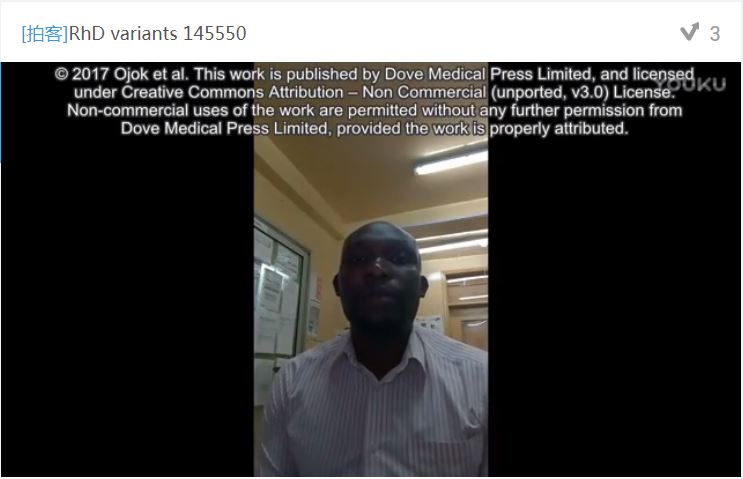9 0 8 0 2
论文已发表
注册即可获取德孚的最新动态
IF 收录期刊
- 2.6 Breast Cancer (Dove Med Press)
- 3.9 Clin Epidemiol
- 3.3 Cancer Manag Res
- 3.9 Infect Drug Resist
- 3.6 Clin Interv Aging
- 4.8 Drug Des Dev Ther
- 2.8 Int J Chronic Obstr
- 8.0 Int J Nanomed
- 2.3 Int J Women's Health
- 3.2 Neuropsych Dis Treat
- 4.0 OncoTargets Ther
- 2.2 Patient Prefer Adher
- 2.8 Ther Clin Risk Manag
- 2.7 J Pain Res
- 3.3 Diabet Metab Synd Ob
- 4.3 Psychol Res Behav Ma
- 3.4 Nat Sci Sleep
- 1.9 Pharmgenomics Pers Med
- 3.5 Risk Manag Healthc Policy
- 4.5 J Inflamm Res
- 2.3 Int J Gen Med
- 4.1 J Hepatocell Carcinoma
- 3.2 J Asthma Allergy
- 2.3 Clin Cosmet Investig Dermatol
- 3.3 J Multidiscip Healthc

Prevalence of RhD variants among blood donors at Gulu Regional Blood Bank, Gulu, Northern Uganda
Authors Ojok P, Oyet C, Webbo F, Mwambi B, Taremwa IM
Received 4 July 2017
Accepted for publication 25 August 2017
Published 15 September 2017 Volume 2017:8 Pages 151—154
DOI https://doi.org/10.2147/JBM.S145550
Checked for plagiarism Yes
Review by Single-blind
Peer reviewers approved by Dr Lucy Goodman
Peer reviewer comments 2
Editor who approved publication: Dr Martin Bluth
Aim/objective: The aim of this study was to determine the prevalence of RhD variant phenotypes
among voluntary non-remunerated blood donors (VNRBDs) at Gulu Regional Blood
Bank (GRBB), Northern Uganda.
Materials and methods: We conducted a cross-sectional study, in which the
first 4.0 mL of ethylenediaminetetraacetic acid (EDTA) blood samples were
collected from VNRBDs and typed for their ABO and RhD blood group status using
IgM and IgG monoclonal typing antisera, respectively. Blood samples that tested
as RhD negative were further investigated for RhD variant phenotypes using
indirect antihuman globulin hemagglutination technique.
Results: We assayed 138
RhD-negative blood samples obtained from VNRBDs. Of these, 66.7% (n=92) were
males. Their median age was 24.4 years (range, 14–33 years). Majority
of the participants were of ABO blood group O (62.8%, n=86), followed by A
(19.7%, n=27), then B (13.9%, n=19) and least AB (3.6%, n=6). The prevalence of
RhD variant phenotypes was 0.7% (n=1; 95% confidence interval, 0.5–0.9). There
was no statistical association of RhD variant phenotypes with donor gender,
tribe and their ABO blood groups.
Conclusion: This study
has revealed a high prevalence of RhD variant among blood donors at GRBB in
Northern Uganda. It further highlights a potential risk of alloimmunization, as
the present blood typing practices do not identify RhD variant phenotypes.
Keywords: Rh blood group,
D variants, D antigen, weak D, partial D, Uganda
摘要视频链接:RhD variants
